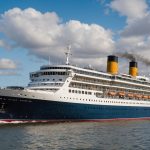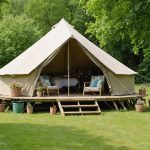Climbing Mount Kilimanjaro is a formidable adventure that demands careful preparation and resilience. This iconic trek offers breathtaking views but is fraught with challenges. Understanding the best routes, training regimens, and essential gear can make all the difference in achieving your summit goal. This guide equips you with practical tips and personal insights to navigate the journey effectively, ensuring a safe and memorable ascent. Prepare to take on this legendary peak with confidence!
Preparing for the Climb
Physical Fitness and Training
Undertaking the climb of Mount Kilimanjaro demands serious physical preparation. A comprehensive fitness program focusing on building strength, endurance, and cardiovascular health is crucial. Engage in activities such as hiking, cycling, and running to get your body accustomed to the demanding trek. Including training hikes with a backpack can simulate the conditions you’ll face and help in acclimatization.
This might interest you : Mastering the art of crafting an unforgettable walking tour along the jurassic coast
Mental Preparation Techniques
Conquering Kilimanjaro also requires mental resilience, especially during the summit attempt at night. It’s essential to adopt mental techniques like visualization, mindfulness, and positive self-talk. Staying focused and determined through these practices can significantly enhance your ability to face the physical and psychological stresses of the climb.
Essential Gear Checklist
Proper gear is indispensable for your journey. You must have layered clothing to handle temperature shifts and a four-season sleeping bag for cold nights. Quality hiking boots are imperative for maintaining comfort and footing on the rugged trails. Prioritize a comprehensive gear checklist for a hassle-free climb, including hydration systems, thermal base layers, waterproof jackets, and other essentials. For a thorough checklist, including all gear needed, refer to this detailed page. So, Continue reading here.
Topic to read : Discover the wonders: a comprehensive guide to london”s captivating west end theatre experience
Understanding Climbing Routes
Overview of Popular Routes
Mount Kilimanjaro offers several trekking routes, each providing distinct experiences. The Marangu Route, known as the “Coca-Cola Route,” is the most economical and well-paved, featuring hut accommodations. Though it bears a nostalgic charm, it can become crowded. Conversely, the Machame Route, with its diverse landscapes and higher success rates due to better acclimatization hikes, attracts those seeking a balance between challenge and accessibility.
Detailed Comparison of Routes: Machame, Marangu, Lemosho
The Machame Route is ideal for climbers aiming for a scenic journey with gradual altitude gain. It typically spans six to seven days, accommodating better acclimatization. On the other hand, the Marangu Route is concise and presents a lower acclimatization success rate over five to six days, often appealing to those on a tighter schedule. For adventurers desiring solitude and more time to adapt, the Lemosho Route offers an extended trek lasting up to eight days, famed for its breathtaking vistas and ample time for acclimatization.
Recommended Itineraries for Different Experience Levels
For beginners, the Marangu Route provides the simplest access, whereas intermediate climbers might tackle the Machame Route. Advanced trekkers often gravitate towards the Lemosho Route for its secluded path and acclimatization benefits, ensuring a safer and more rewarding summit attempt. Tailoring each itinerary to your experience level thus enhances not only the journey’s enjoyment but also the probability of reaching Uhuru Peak successfully.
Safety and Health Considerations
Recognizing and Preventing Altitude Sickness
Altitude sickness on Kilimanjaro can pose a serious risk if not managed properly. Climbers should be alert to symptoms like headaches, nausea, and dizziness. Maintaining a slow, steady pace is crucial to adjust to the increasing altitude. Utilizing the “pole, pole” philosophy, meaning “slowly, slowly,” helps reduce the likelihood of altitude sickness. Trekkers are also advised to take preventive measures such as altitude medication like Acetazolamide, subject to medical advice.
Guidelines for Acclimatization and Hydration
An effective acclimatization process is vital to safely conquer Kilimanjaro. Gradually ascending over several days aids in adjusting to the reduced oxygen levels. Drinking at least three liters of water daily is critical for prevention, with hydration systems like CamelPaks encouraged. Thoroughly discussing your acclimatization strategy with your trekking guide ensures preparation against potential health issues.
Safety Protocols and Importance of Guided Treks
Choosing to undertake guided treks enhances overall safety. Guides are well-versed in safety protocols, from handling emergencies to offering support against hypothermia with quality thermal gear. Regulations necessitate that all climbers engage with licensed guides, fostering a safer journey. This support framework also ensures adherence to park rules, contributing to your successful ascent. Guided treks not only bolster safety but also enrich the climbing experience through shared knowledge and camaraderie.
Financial and Logistical Planning
Breakdown of Typical Costs for Various Routes
When planning your adventure to climb Mount Kilimanjaro, understanding the cost of climbing is crucial. The expenses vary significantly based on the route you choose. For instance, budget treks start around $1,000, while premium options can exceed $5,000. The popular Machame Route averages around $2,000, including park fees, meals, and support crew wages. It’s essential to assess these costs against your budget and priorities to make an informed decision.
How to Choose a Reputable Tour Operator
Choosing a reputable Kilimanjaro tour operator ensures safety and enhances the trekking experience. Look for companies with proven track records, such as https://africabucketlist.com/en/climb-mount-kilimanjaro/, which offer guided treks. Evaluate their inclusions, such as experienced guides, appropriate gear, and safety measures. Client reviews and accreditation by relevant authorities can further guide your selection.
Transportation Options to Reach Kilimanjaro and Visa Requirements
Reaching Mount Kilimanjaro typically involves flying into Kilimanjaro International Airport. From there, various transportation options, including taxis and shuttles, can take you to starting points. Remember to account for visa requirements; most travelers need a Tanzanian visa costing around $50, though U.S. citizens pay approximately $100. Consider health precautions like yellow fever vaccination as part of your preparations.










